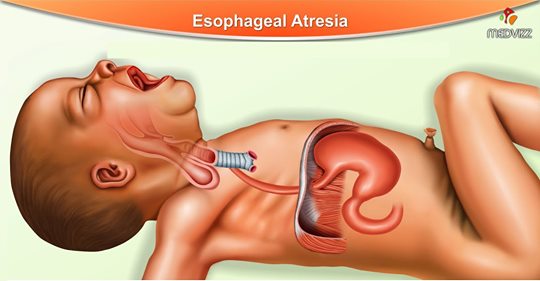Esophageal Atresia: Etiology, Types, Pathophysiology, Clinical Features, Diagnosis, and Treatment
Esophageal atresia is a congenital defect in which the upper esophagus is not connected to the lower esophagus, ending blindly instead. It is caused by the abnormal development of the tracheoesophageal septum. Esophageal atresia with a fistula connected distally to the trachea is the most common kind of esophageal malformation (classified as Gross type C). It presents immediately after birth with cyanotic attacks, foaming at the mouth, and coughing, and prevents any attempts to pass a feeding tube into the stomach. X‑ray is mandatory for classifying the atresia and should show an air‑filled pouch situated at the level of the third thoracic vertebra. Infants with suspected esophageal atresia cannot be fed orally because of the risk of aspiration pneumonia. Curative surgery must, therefore, be performed within the first 24 hours after birth.
